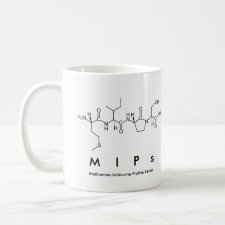
Authors: Li JY, Zu BY, Zhang Y, Guo XZ, Zhang HQ
Article Title: One-pot synthesis of surface-functionalized molecularly imprinted polymer microspheres by iniferter-induced "living" radical precipitation polymerization.
Publication date: 2010
Journal: Journal of Polymer Science Part A: Polymer Chemistry
Volume: 48
Issue: (15)
Page numbers: 3217-3228.
DOI: 10.1002/pola.24057
Abstract: This article describes for the first time the development of a new polymerization technique by introducing iniferter-induced ''living'' radical polymerization mechanism into precipitation polymerization and its application in the molecular imprinting field. The resulting iniferter-induced "living" radical precipitation polymerization (ILRPP) has proven to be an effective approach for generating not only narrow disperse poly(ethylene glycol dimethacrylate) microspheres but also molecularly imprinted polymer (MIP) microspheres with obvious molecular imprinting effects towards the template (a herbicide 2,4-dichlorophenoxyacetic acid (2,4-D)), rather fast template rebinding kinetics, and appreciable selectivity over structurally related compounds. The binding association constant Ka and apparent maximum number Nmax for the high-affinity sites of the 2,4-D imprinted polymer were determined by Scatchard analysis and found to be 1.18 × 10^4 M-1 and 4.37 μmol/g, respectively. In addition, the general applicability of ILRPP in molecular imprinting was also confirmed by the successful preparation of MIP microspheres with another template (2-chloromandelic acid). In particular, the living nature of ILRPP makes it highly useful for the facile one-pot synthesis of functional polymer/MIP microspheres with surface-bound iniferter groups, which allows their direct controlled surface modification via surface-initiated iniferter polymerization and is thus of great potential in preparing advanced polymer/MIP materials. © 2010 Wiley Periodicals, Inc. J Polym Sci Part A: Polym Chem 48: 3217-3228, 2010
Template and target information: 2,4-dichlorophenoxyacetic acid, 2,4-D, 2-chloromandelic acid
Author keywords: iniferter-induced living radical precipitation polymerization, living polymerization, microsphere, modification, molecular imprinting



Join the Society for Molecular Imprinting

New items RSS feed
Sign-up for e-mail updates:
Choose between receiving an occasional newsletter or more frequent e-mail alerts.
Click here to go to the sign-up page.
Is your name elemental or peptidic? Enter your name and find out by clicking either of the buttons below!
Other products you may like:
 MIPdatabase
MIPdatabase









